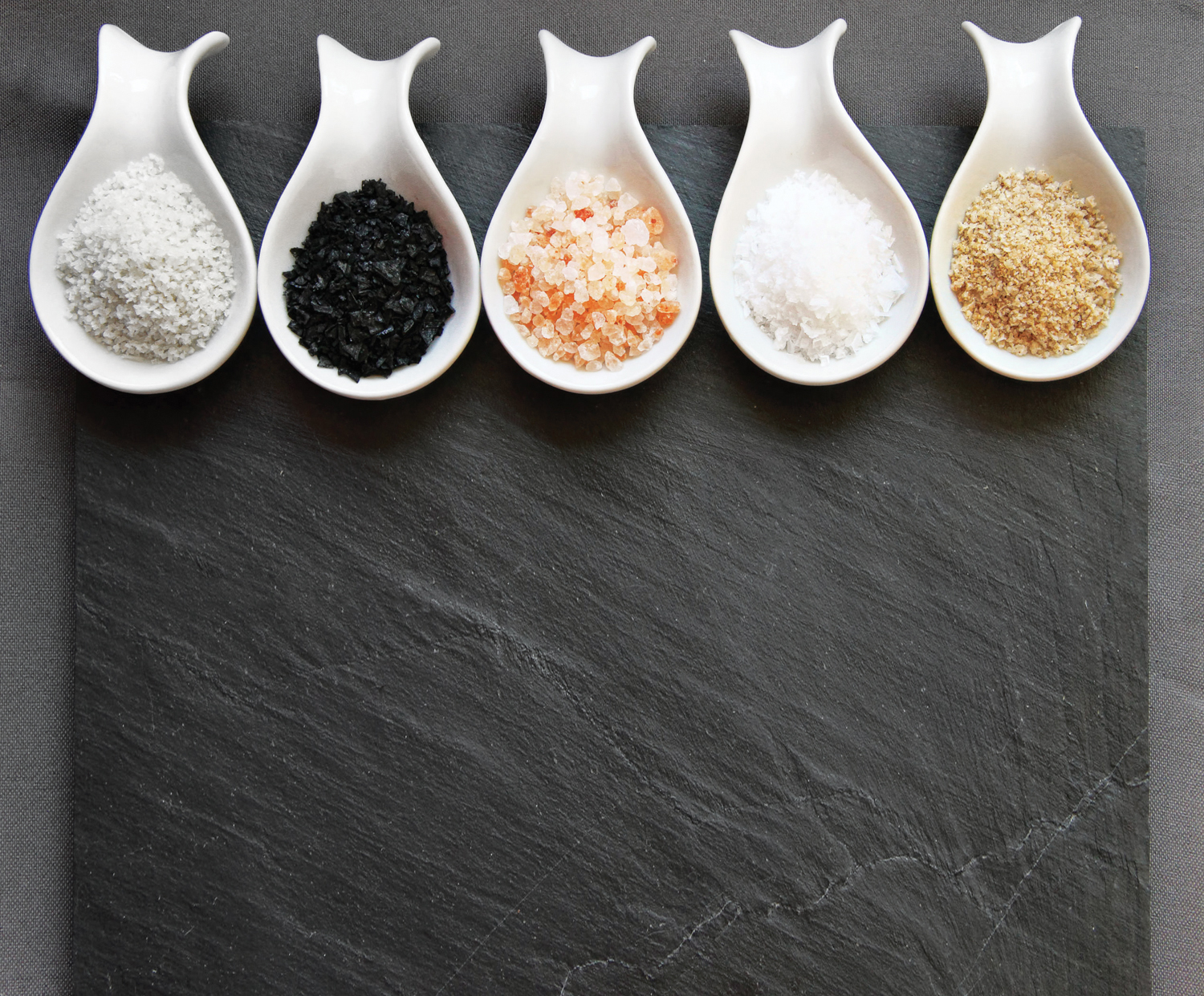
My, How Far Salt Has Come
Growing up as an ’80’s kid, all I knew about salt was that it came in a package focused on a girl clad in a yellow dress and shoes, walking in the rain but protected by an umbrella, holding a cannister that’s spilling salt. Will kids of the iPad generations ever truly inspect packaging like I did while sitting at the dining table each day?
Now talk to me about salt, and I can ramble off my favorite cooking salts, and finishing salts. Or I can go into a tailspin defending how sea salt chocolate chip cookies may possibly be the best cookie flavor ever baked. I can nerd out with the best of them, discussing how before refrigeration was available, curing foods with salt was the only way to save meat. Without salt, bacteria would grow in and on meat, rotting it quickly.
While salt should always be consumed in moderation, it does provide a beautiful garnish or a pop of flavor to a dish. Here we break down different types of salts, and when best to use them.
Celtic salt is grey from the clay that is found naturally in the area where it is harvested by hand, mined on the coasts of France in the famed Guérande region. Its slight damp quality is due to this salt absorbing moisture from the atmosphere with its hygrometric properties. Moisture capacity in the salt is ideal and proves that this salt is recently harvested. It offers a mild flavor and crunch, typically desired with braised meats and roasted root vegetables, and can be used as both a cooking and a finishing salt.
Hawaiian black lava salt is a sophisticated finishing salt with a briny flavor and a coarse, chunky texture, best used for seasoning vegetables, fish and pork. With its dark color, it makes for a beautiful presentation. That color is produced through its containment of activated charcoal. Black lava salt should not be used during the actual cooking process as it will dissolve and add black elements that will settle to the bottom as residue.
Himalayan pink salt comes from the salt mines 5,000 feet below the Himalayan mountain range in the Punjab region of Pakistan, which has one of the richest salt fields in the entire world. The “pink” color can vary between pink, white and red and indicates its mineral content. This salt is mostly used for seasoning meats and soups, though it is best to grind it into a fine size and use only small amounts because of its high mineral flavor and complex notes.
Sea salt is the most affordable version of a “fancy” salt, thanks to its less intensive harvesting process. Sea salt is evaporated from salt water and is generally coarse, unrefined and irregularly shaped. This salt is like the cooler brother of table salt; use this in meat, seafood and vegetables dishes or soups that call for table salt, though expect more complex mineral notes, an earthier taste and a much crunchier texture.
Smoked sea salt is gaining popularity on menus, as it adds a rich, smoky flavor that pairs well with cheese, steak and shellfish. This smoked salt technique harkens back to the days when Vikings infused sea salt crystals with smoke from wood fires. It is handcrafted by smoking sea salt over hardwoods — and the intensity of the flavor depends on the type of wood used, hickory seemingly the most common.

